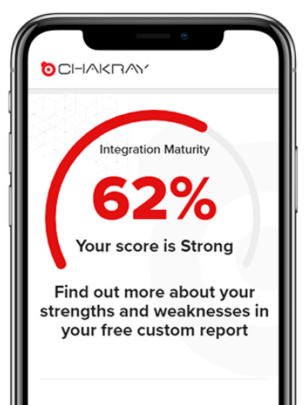Technology plays a crucial role in our day to day lives. This is due to some key factors such as reduction in cost of hardware and infrastructure, increased: speed , power & capacity of processing as well as storage, rapid evolution of tools , increased reach & speed of the internet, and most importantly the rise of a digital native generation.
Most organisations are privy to the above factors and have duly set about transforming their organisations to meet the demands of a digital native population. There are countless blogs, articles and discussions on digital transformation that have put forth very valuable as well as interesting ideas. However, most of them seem to be focusing on the topic from a technical or process point of view. I would like to explore a path off the beaten track and discuss the psychological aspects of digital transformation. This will be done through discussing some key terms and how they can impact an organisation’s digital transformation initiative.
Psychology of digital transformation: The 3 main factors that affect companies
Let’s explore the psychology aspects of digital transformation, analyzing key terms and how they can influence a company’s digital transformation initiative:
Heuristics: How it impacts digital transformation
From a digital transformation perspective, Availability and Affect heuristics could have the biggest impact.
2 types of Heuristics
- Availability Heuristics : is a cognitive bias where decisions are based on information, example or experience most recent to you, as opposed to considering all relevant facts. (Tevrsky & Kahnmen, 1973).
- Affect Heuristics : this cognitive bias relies on the current emotional state of an individual as opposed to evidence based information, when decisions are being made. (Paul Slovic et al, 2000).
How Heuristics impacts digital transformation
Heuristics have a wide impact on key decisions, such as performance reviews of team members, vendor selection & review, interpreting project KPI’s and could even impact technology focused selections, i.e. which programming language is best, architectural style, platform & tool selection .
Diffusion of responsibility: How it impacts digital transformation
A phenomenon associated with social psychology, where an individual is less likely to act or take ownership for their actions, when within a group. This is also known as the ‘bystander effect’ (Latane & Darley , 1969). And is closely related to another psychological phenomena called Social loafing, where an individual is likely to expend less effort when working collectively within a group, as there are multiple targets to where responsibility can be diffused.
How it impacts digital transformation
Meetings and team discussions are key to digital transformation efforts, where important issues, potential change requests, potential risks, alterations to the project schedule as well as dependencies that could affect a transformation project are discussed. Meetings and discussions where clear ownership of tasks and actions are not explicitly communicated, are prime for diffusion of responsibility to have a negative effect.
Furthermore, in large digital transformation initiatives, it is most likely that multiple stakeholders are involved, therefore it is imperative to clearly define the scope of work to be carried out by each party , such that it’s clear who is responsible for what. If this is not the case. It’s very likely that critical actions to be taken, would not move forward, seriously impeding progress..
Group think: How it impacts digital transformation
This social psychological phenomenon occurs when members with shared interests, points of view ,values or beliefs prioritise the need to belong to a group at the expense of critical evaluation (Irving, 1982) . Therefore when points of view or decisions that are in conflict with the ‘In Group’ are presented, they tend to get ignored or met with hostile reactions.
Furthermore, this tends to segregate people with common interests as the ‘In Group’ and anyone who holds different views, interests etc are deemed as the ‘Out Group’. Leading to a ‘Us’ versus ‘Them’ divide.
How it impacts digital transformation
Groupthink is detrimental to critical analysis and thinking and can significantly hinder effective decision making, building an inclusive & open work culture, as well as identifying the most optimal solutions to business problems. A commonly visible example of groupthink in technology based projects is, when a group of team members have an allegiance to a particular technology which forms the ‘In Group’ and everyone else is seen as the ‘Out Group’. This causes any attempt to find the most suitable technology to be derailed into a ‘ours’ is better than ‘yours’ debate.
-You may be interested in this article: Benefits of a digital readiness assessment –
Are there solutions to these psychological factors that affect the digital transformation?
What tends to get commonly overlooked, is that Digital Transformation is predominantly a “People Centric” activity which uses technology as a tool and not the reverse of it. While the above mentioned factors are deemed critical, by no means is it limited to them.
So, what can be done about it ? The biggest safeguard is Awareness . These phenomena are primordial to the human condition as well as how we function as a society. Therefore, the author included is not immune to these factors. It could be argued that these are human functionally as opposed to errors. Being aware of these phenomena, will enable safeguards to be put in place within procedures and governance models that guide digital transformation initiatives.
10 steps to use digital transformation and psychology to overcome resistance and effectively implement change
In addition to awareness, some safeguards that can be easily applied to use digital transformation and psychology are:
- Clear definition of what is ‘In Scope’ and most importantly. What is ‘Out of Scope’ for each stakeholder
- Reduce the use of Jargon. This is a primary facilitator of Heuristics, as it tends to over simplify the actual complexity of business requirements, technical solutions/requirements or any domain specific subject matter.
- Provide sufficient lead time for decisions to be made. This, for all factors to be considered as opposed to heuristics coming into effect.
- Clearly define ownership of tasks and actions. Individual accountability is key, this is one of the best safeguards against diffusion of responsibility.
- Structure your meetings i.e. Clear agenda,Start on time, End on time, Send meeting minutes at the end of the meeting with clear action owners and specify target dates of the action listed.
- Regulate the number of meetings. Too many meetings could pave the way for social loafing where responsibility can easily be diffused.
- Foster an inclusive team culture that encourages open communication. This can help combat GroupThink.
- Timing of meetings. Avoid having important meetings immediately prior or during meal times as well as late nights . Factors such as hunger and sleep deprivation have a direct influence in causing effect heuristic (Danziger & Levav, 2011).
- Embrace uncertainty. Groupthink thrives on the safety of false certainty.However, facing the truth fosters better planning.
- Have a clear understanding of “Why” something needs to be done a certain way. This will reduce decisions being made on abstract information.
At Chakray, we are experts in guiding companies towards their digital transformation, contact us!







